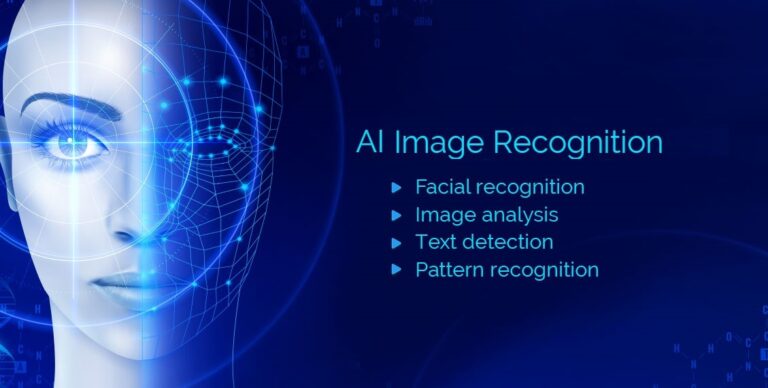AI image recognition analyses photographs for the identification of objects, locations, and so on. Artificial intelligence (AI) is becoming more sophisticated as it is subjected to machine identification. The more databases we keep for Machine Learning models, the more thorough and agile our AI will be in identifying, understanding, and predicting in a variety of situations.
Image recognition helps computer vision identify objects in the environment more accurately. Without image recognition, it is difficult to identify or distinguish items. Because image recognition is so important in computer vision, we need to learn more about it.
AI Image Recognition
Image recognition, a subdivision of computer vision, is the art of recognizing and deciphering photographs for identifying objects, places, people, or things that can be seen in one’s natural surroundings. Finally, the primary objective is to view the objects as a human brain would. Image recognition attempts in detecting and evaluating all of these things before drawing conclusions based on the results of the analysis.
Computer vision, meanwhile, is a broader term that encircles the ways to acquire, analyze, and process data from the real world to machines. Image recognition inspects each pixel in an image in the same way that humans do for extracting relevant information. AI cameras that have been trained in computer vision have the capability of detecting and recognizing a wide range of objects.
Working of AI Image Recognition
Images are recognized by humans with the utilization of a natural neural network that aids them to identify items in images based on prior experiences. In addition, the artificial neural network assists robots with image recognition.
An AI neural network’s multiple layers of cells have the capability of influencing one another. The type of information required determines the complexity of a neural network’s structure and design. Image recognition is more difficult than one might think because it needs deep learning, neural networks, and advanced image recognition algorithms for machines to be conceivable.
Training methods for AI to Recognize the Image
To make machine image recognition a possibility, we must first train algorithms with the capability to learn and predict with high accuracy. Consider a scenario where we are looking at an image of a cat, we can tell it’s a cat, but the image recognition system operates differently.
Due to similar characteristics, a machine can view it in the following ways:
- 75% kitten
- 10% puppy, and
- 5% other similar styles like an animal, which is known as the confidence score.
To anticipate the object accurately, the machine must first be aware of what it sees, then analyze it by comparing it to previous training for creating the final prediction.
Neural Networks in AI Image Identification
Machines see and assess visual content in images in ways that humans don’t. Machines, as opposed to humans, decipher images as a raster, which is a compilation of pixels, or as a vector. Convolutional neural networks help in achieving this objective for machines that can depict what is occurring in images.
A convolutional neural network now aids AI in image recognition. However, the question of how to make diverse images identifiable to AI arises. The clarification is that these images are labeled utilizing the appropriate data labeling techniques for generating high-quality training datasets.
How are images Recognized by AI?
Several factors were considered while recognizing the photographs for assisting AI in differentiating the object of interest. Let’s take a closer look at the way and kinds of things are recognized in image recognition.
Face recognition
One of the most notable examples of how a face recognition system maps several attributes of the face is AI face recognition. After gathering such data, AI processes it to look for a match in the database.
Smartphone manufacturers are now utilizing face recognition systems for offering security to phone users. They can unlock their mobile or install various apps on their smartphone. Their privacy, however, may be threatened since their data may be obtained without their knowledge.
Such issues, however, will be addressed in the future with more upgraded datasets created by landmark annotation for facial recognition software.
Detecting Texts
Text detection is critical for OCR transcription, which extracts text from pictures and makes it accessible to other users, like a categorization of text or annotation of text, to generate datasets for NLP-based Machine Learning (ML) model development.
Recognition of Patterns
Image recognition is utilized in the same way for recognizing a particular pattern in a picture. Like face expressions, textures, or body movements in various scenarios.
Image Annotation for recognition of Object by AI
Recognition of objects is now possible by utilizing data labeling services. Human annotators spent a notable amount of time and effort meticulously annotating each image, resulting in enormous amounts of datasets. Machine learning methods utilize the majority of the enormous amount of training data for training the model.
However, in unsupervised machine learning, such a requirement does not exist, whereas in supervised machine learning, the AI model cannot be created without labeled datasets. Furthermore, labeling the data is required if we want our image recognition algorithm to be capable of accurate prediction.













